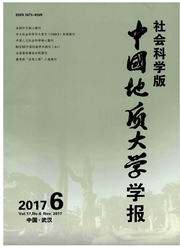

 中文摘要:
中文摘要:
本文从生态环境保护的现实制度中,提出一个问题:"经济增长"与"环境保护"的关系是同一主体双目标下的"权衡"还是两个主体间的"制衡"?这一问题的理论与实践意义在于:哪一种制度取向能够更有效地实现环境规制目标。论文还从"环境库茨涅兹曲线"、"理性经济人的目标函数与约束条件"等相关问题中引申出经济—环境"权衡"与"制衡"的差别所在。提出经济—环境"权衡关系"逐步转向"制衡关系"的制度构建或制度改革的主张,并提出实现"制衡关系"的主要路径是:树立起对经济增长制衡作用的力量,强化外部决定的环境规制约束条件。采取这一逻辑思路,分析了现实中的几个相关制度问题:"绿色GDP"核算制度的无效性、环保机构垂直管理的必要性以及"河长制"的合理性。
 英文摘要:
英文摘要:
Aiming at the reality of environmental protection institution, this paper puts forward a ques- tion: what is the desirable relationship between economic growth and environmental regulation? Multi- target balance or multi-actor equilibrium? The academic and practical significance of this issue is: which system should be used to achieve environmental protection objectives. The paper discusses the difference in policy between "the balance" and "the equilibrium" based on the theories such as "Economic Man" and "Environmental Kuznets Curve". The suggestion presented for system reform is that we should es- tablish a policy system of multi-actor equilibrium between economic growth and environmental regula- tion. Several related issues such as Green GDP are also discussed.
 同期刊论文项目
同期刊论文项目
 同项目期刊论文
同项目期刊论文
 期刊信息
期刊信息
